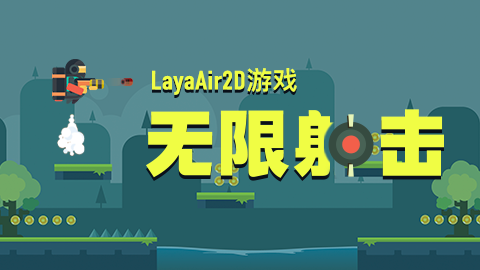1.关于renderHandler所带的默认回调参数
this.characterList.renderHandler = Laya.Handler.create(this,this.listRenderHandler,null,false);
在Handler.creat()方法里,给回调函数传入的参数为null,那么为何能在后面的listRenderHandler(cell,index)函数声明里取得这两个参数?
检查List的源码中渲染Item的函数:
renderItem(cell, index) {
if (this._array && index >= 0 && index < this._array.length) {
cell.visible = true;
if (cell["_$bindData"]) {
cell["_dataSource"] = this._array[index];
this._bindData(cell, this._array[index]);
}
else
cell.dataSource = this._array[index];
if (!this.cacheContent) {
this.posCell(cell, index);
}
if (this.hasListener(Laya.Event.RENDER))
this.event(Laya.Event.RENDER, [cell, index]);
if (this.renderHandler)
this.renderHandler.runWith([cell, index]);
}
可以发现当List存在renderHandler属性不为空时,调用了Handler里的runWith()方法默认为renderHandler的回调函数添加了两个参数。
2.关于runWith()方法
this.characterList.renderHandler = Laya.Handler.create(this,this.listRenderHandler,this.text,false);
还是上面的例子,如果在creat()函数里手动给回调函数传入了参数,那么listRenderHandler(cell,index)函数反而不能正常工作,这又是为什么?
检查Handler源码中的runWith()方法:
runWith(data) {
if (this.method == null)
return null;
var id = this._id;
if (data == null)
var result = this.method.apply(this.caller, this.args);
else if (!this.args && !data.unshift)
result = this.method.call(this.caller, data);
else if (this.args)
result = this.method.apply(this.caller, this.args.concat(data));
else
result = this.method.apply(this.caller, data);
this._id === id && this.once && this.recover();
return result;
}
可以发现如果我们手动给回调函数传入了参数,这里会使用concat()方法将默认传入的参数拼接到已传入参数的后方(用上面的例子来说就是renderHandler回调函数拥有了三个回调参数,其中第一个时手动指定的,后两个时默认传入的);
只有当没有手动传入任何回调参数时,runWith()方法会将回调函数的参数指定为默认参数,这也说明了为什么我们没有在creat()中传入任何回调参数而却能够使用cell和index这两个默认回调参数





